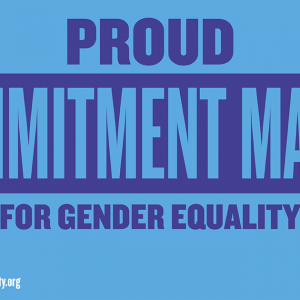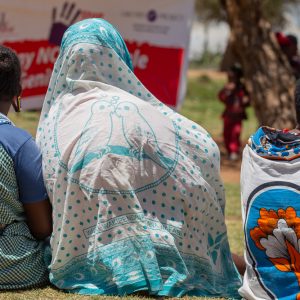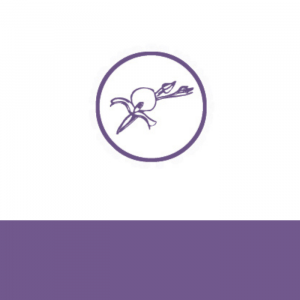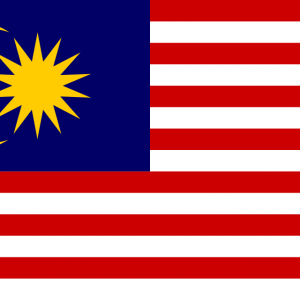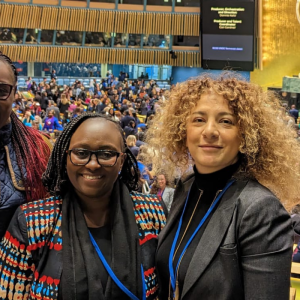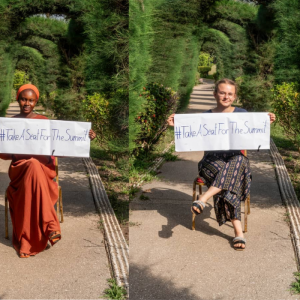Global estimates show that 49% of girls have undergone female genital cutting in Indonesia. Also referred to as female genital mutilation (FGM) or female circumcision, UNFPA estimates that between 2015 and 2030, 15 million girls will undergo the practice in Indonesia unless progress to end it is accelerated.
Globally, we have a target to end FGC by 2030 through the Sustainable Development Goals. We will not achieve this target unless we accelerate, expand and support work to end the practice in Asia. As one of only two Asian countries to report national prevalence data, Indonesia has made a step in the right direction that could help further the movement to end the practice. It may also set a benchmark for other Asian countries to recognise the issue and acknowledge how it impacts potentially millions of women and girls across the region. The Maldives is one such country following suit after joining the data set this last February.
In April 2020, together with the Malaysia-based Asia-Pacific Resource and Research Center for Women (ARROW), Orchid Project officially launched the Asia Network to End FGM/C. The aim of the network is to bring much needed attention, prioritisation, and adequate resourcing to the issue across Asia.
Work to end FGC has been going on in Indonesia since the 1990s, and one of our network partners has been at the forefront of that movement for decades. Atashendartini Habsjah, affectionately and respectfully known as Ibu Atas, is an inspiring women’s rights activist that has been working to end FGM/C in Indonesia since 1995, when she supported country-level work to influence the landmark Beijing Declaration and Platform for Action.
In the week that the Asia Network to End FGM/C briefed the Committee on the Elimination of Discrimination against Women (CEDAW), we spoke to her about her journey in this movement so far, and what the Indonesian Government needs to do to end the cut for Indonesian girls and women.
When did you first decide to work to end female genital cutting? What motivated you to do so?
“Looking back, it was in 1994 when I was a lecturer of Women’s Studies at the University of Indonesia. My colleague, Anita Rakhman, decided to work to end this FGC. Why? Because Anita Rakhman went to the International Conference on Population Development in Cairo 1994. Six months later, she asked us that as women lecturers: “Why are we not looking back at ourselves?” She was the one that told us we can start to [take pictures] of our genitals. Nobody knew when the pictures were printed out of the 20 or so women involved, whether female [genital] cutting had been performed. Nobody until now understood who was the victim of this practice. Anita was the one who did that, and we as lecturers of Women’s Studies said: “OK, we should start collecting data because I think that this is about women; the harmful practices on our bodies.” From the beginning, we already started saying: “Stop! with our genital cutting.”
Later, we wrote a proposal, and finally Population Council in Jakarta accepted it, and said: “OK, you can collect some data about this FGC in Indonesia.” That’s the first thing we did.”
How did your advocacy and work help to convince the Indonesian Government to collect national data on female genital cutting? What were the key stages in this journey?
“The first small study was conducted in West Sumatra because we knew at the time that West Sumatra still used a knife to cut the genitals. We decided to see how it was happening there. At that time, there was an NGO which is led also by the University of Indonesia, through the Public Health Department. They followed with some small studies about this practice in West Java. This study was just a qualitative study, but it was very useful for advocacy because it was the first time we saw that low-income families were accessing FGC as a service, free of charge.”
Trigger warning: the paragraph below this video contains descriptions of young girls undergoing FGC.
“About 25 girls went – and we still have the pictures – who were 7, 8, 9 years old, standing on the table, and a person just cutting something on their genitals. To convince the parents it had been done, there was a bowl with water, and some tissue that had been cut was put in the bowl. We were shocked that so much tissue was on the level of water in the bowl.”
End of trigger warning.
“Can you imagine? We were so worried and were advocating by bringing this picture everywhere saying that we have to stop doing this FGC. That’s what happened.
We were very lucky that we had friends at the Ministry of Health; two female doctors and officers who also went to ICPD in Cairo. We came to them and they said “Of course we can do more to stop these practices.” Then we were going into the Ministry of Health, and they started to have many sessions to present about FGC and how harmful it is for women and girls.
Secondly, we went into the Ministry of Religious Affairs. This is very important because FGC was said to be an Islamic obligation. We asked the Ministry of Health to organise a series of conferences and could ask some officers from the Ministry of Religious Affairs, to present on whether it’s true that FGC is an obligation. Our goal from the beginning was always “Don’t touch our genitals.”
What are the biggest challenges that you have faced in your work to end FGC in Indonesia? How have you overcome these challenges?
The biggest challenge, of course, if you are working with ministries and high ranking officers, is staff turnover. We miss the two high ranking female doctors at the Ministry of Health because they are retired. But we are lucky that we have a Ministry of Women’s Empowerment. We went to them and asked how to advocate to end these harmful practices. Finally, they were the ones who have been helping us, working together with UNFPA who have been helping us with advocacy on harmful practices in Indonesia for the last 10 years.
On research on FGC in Indonesia:
“We were very happy that for the first time in 2018 Komnas Perempuan [the Indonesian National Commission on Violence Against Women] was able to carry out the biggest research. [It’s important to] please give research [support] to women activists.
UNFPA funded this study in 10 provinces and in 17 districts, which were chosen because we knew there was still 80% – 85% prevalence of female circumcision in these areas. This is the biggest study and I’m so happy.
So we should keep persisting with asking to stop [FGC]. We are in a good position, and UNFPA is the one always funding meetings. There is no need more to do research [right now], but now it is the stage of action, action, action, action.”
What one thing could the Government do to have the biggest impact on reducing rates of FGC in Indonesia?
“The challenges are still big. Now we have male doctors to bring into our advocacy group. We have three gynaecologists, and every time we bring them to convince the audience [at meetings], especially in front of the religious leaders. The male gynaecologist is very important – to convince their own groups that there is no need that Muslim girls should be circumcised.
On the other side, we are very happy [that] in Asia Pacific in the last three years we have had the women’s ‘Kongres Ulama Perempuan Indonesia’ (KUPI), where one of the actions is to stop female genital cutting in Indonesia.
The Ministry of Women’s Empowerment is already taking the lead to end female circumcision in Indonesia. Indonesia has 260 million people spread over 34 provinces, it is of course very difficult to get it stopped, but what they are doing is now that even the Ministry of Religious Affairs is already also trying to stop the practices, and of course the Ministry of Health is still very active. Also the midwives are very active for stopping medicalisation of female circumcision. I think the three ministries already have commitment. Local governments have their own policies, but should also follow the guidance to stop female genital cutting as soon as possible. We hope with the next generation, by 2030, that female circumcision will be stopped everywhere. “
What advice do you have for other activists and advocates across Asia who are trying to convince their governments to support an end to this practice?
“For the Asia Pacific region of course it is very difficult. But one thing I can say to the activists; there should be more advocacy and it should be led by women activists. We should be very firm saying: “Don’t touch our genitals.” That’s why we are asking: “Stop! with the harmful practices.”
It can also be helpful to have male gynaecologists who are against the practice as part of your advocacy work. We are also happy to have people like Imam Besar working with us. He is the head of the biggest mosque in Jakarta and a professor, and shared that when his daughter was born in a Jakarta hospital, the lady who brought the baby said: “Mister, we already circumcised your daughter.” He was so angry, and it happened without informed consent. This is the kind of person to have in your advocacy team and to convince people from different angles. “

